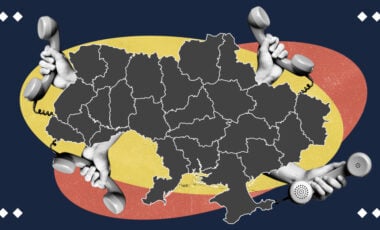Russian pollution of Ukrainian rivers results in catastrophic fish kill, including precious red sturgeon

Photo: Serhii Zhuk / Head of the State Environmental Inspection in the Chernihiv region
The pollution of the Seim and Desna rivers is a grave issue that affects nearby communities and endangers the biodiversity of the entire river ecosystem. WWF-Ukraine experts have observed the death of sturgeon fish species, which have managed to survive in these river basins against all odds.
WWF-Ukraine reports that.
Specifically, the passing of sterlets, a type of sturgeon almost extinct in Ukraine, was documented.
"There is a great risk that due to pollution, small sturgeon populations in Desna are under threat of reduction! If the situation does not change, it can have catastrophic consequences for this unique fish species," WWF-Ukraine emphasizes.
Photo: Serhii Zhuk / Head of the State Environmental Inspection in the Chernihiv regionReports state that the Seim and Desna rivers are contaminated because the sugar factory in the Russian city of Tyotkino, situated in the Kursk region, dumps waste into the rivers. This pollution, specifically organic substances, has decreased oxygen levels in the water, causing a decline in the fish population.
It is worth noting that there are 26 species of sturgeon in the world, of which six used to inhabit Ukrainian waters: common beluga, Russian sturgeon, common sturgeon, freshwater sturgeon, Atlantic sturgeon, and spiny sturgeon. Regrettably, the last two are now considered absent in Ukraine due to poaching, damage to their natural breeding grounds, and dam-building. The remaining four species, although still present, are at risk of extinction.

Photo: Serhii Zhuk / Head of the State Environmental Inspection in the Chernihiv regionIt is worth noting that there are 26 species of sturgeon in the world, of which six used to inhabit Ukrainian waters: common beluga, Russian sturgeon, common sturgeon, freshwater sturgeon, Atlantic sturgeon, and spiny sturgeon. Regrettably, the last two are now considered absent in Ukraine due to poaching, damage to their natural breeding grounds, and dam-building. The remaining four species, although still present, are at risk of extinction.
Sturgeons hold a rather dismal world record in terms of population decrease – overall, their numbers have plunged by around 90% since the 1970s.
Right now, one of the biggest dangers to sturgeons is the illegal hunting and trafficking of their meat and caviar.
The sturgeon fish species is facing extinction. Their populations, not just in Ukraine but globally, are significantly decreasing. The international community and Ukrainian ecologists must work together to preserve these valuable species.

Photo: Serhii Zhuk / Head of the State Environmental Inspection in the Chernihiv region
Specifically, WWF-Ukraine is a partner in the EU project "LIFE Boat for Sturgeon." This project comprises ten partners from Austria, Romania, Bulgaria, Hungary, Slovakia, Slovenia, and Ukraine. These partners will collaborate along the Danube River to support the populations of various Danube sturgeons, including beluga, starry sturgeon, freshwater sterlet, and Russian sturgeon.
The project involves establishing two live genebanks in Austria and Hungary, implementing genetic mating processes, releasing offspring of all four species, and implementing a standardized monitoring plan. This will be paired with extensive initiatives and collaboration with fish conservation authorities, local government officials, and Danube fishermen.
For reference:
Rubryka previously wrote that Ukrainian experts have identified the source of pollution in the Seim and Desna rivers. Based on almost 100% of the data, it has been determined that the Tyotkino sugar factory, located in the neighboring Kursk region of Russia, is responsible. Furthermore, experts have emphasized that it will take 2-3 years to restore the biodiversity and biological resources of the affected rivers.
In mid–September, seven tons of dead fish were gathered in Chernihiv over two days due to pollution in the Desna River. The collection efforts were supported by communal services, rescuers, and volunteers.
As of September 11, the environmental damage caused by pollution in the Seim and Desna rivers in the Chernihiv and Sumy regions is estimated to be more than 405 million hryvnias.

Two years of ecocide: uncovering Russia's destruction of Ukraine and its global consequences

UAnimals organizes international performance to raise awareness of Russia's ecocide in Ukraine

Ecocide and consequences of Kakhovka dam explosion: scientists present new forecasts

"Kakhovka dam explosion is the largest act of ecocide since beginning of full-scale war" – Ukraine's environment ministry



















































